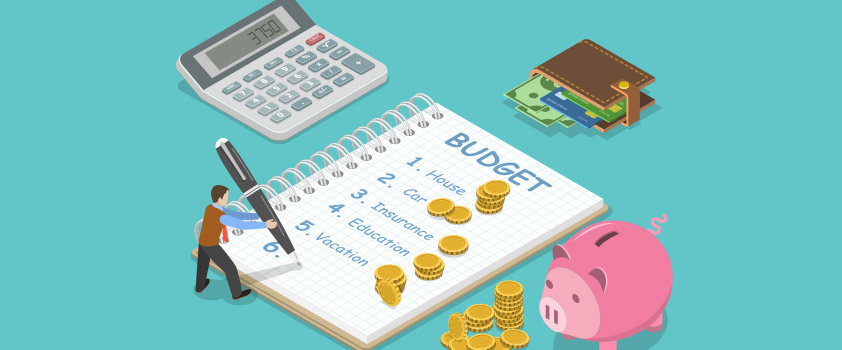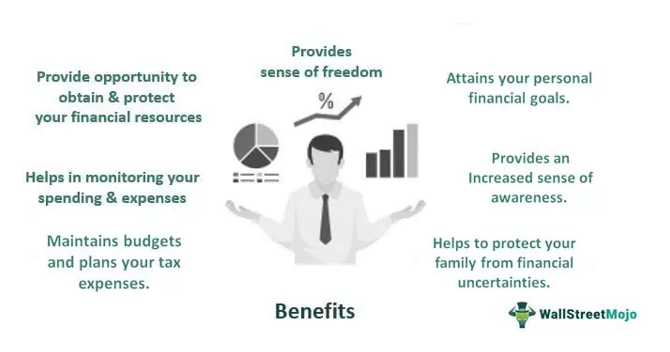Managing personal finances can be challenging, especially when you have multiple expenses and financial obligations to take care of. However, creating and sticking to a personal finance budget can help you to stay on top of your finances and achieve your financial goals.
In this blog post, we will discuss ten simple steps that you can follow to create and stick to a personal finance budget that works for you.
Step 1: Identify Your Financial Goals
The first step in creating a personal finance budget is to identify your financial goals. These could include saving for a down payment on a house, paying off debt, building an emergency fund or saving for retirement.
Once you have identified your financial goals, you can prioritize them and allocate your income accordingly.
Step 2: Calculate Your Income
The second step is to calculate your income. This includes all sources of income, such as your salary, bonuses, and any other income you may receive.
When calculating your income, it is important to be realistic and take into account any fluctuations or changes in income that may occur.
Step 3: Track Your Expenses
The third step is to track your expenses. This involves keeping a record of all your spending, including fixed expenses such as rent or mortgage payments, utilities, and insurance, as well as variable expenses such as groceries, dining out, and entertainment.
By tracking your expenses, you can identify areas where you may be overspending and make adjustments to your budget accordingly.
Step 4: Categorize Your Expenses
The fourth step is to categorize your expenses. This involves grouping your expenses into categories such as housing, transportation, food, entertainment, and debt repayment.
Categorizing your expenses can help you to see where your money is going and make adjustments to your spending in each category as needed.
Step 5: Set Spending Limits
The fifth step is to set spending limits for each category of expenses. This involves deciding how much you want to spend in each category and sticking to that limit.
Setting spending limits can help you to control your spending and avoid overspending in any one category.
Step 6: Create a Budget Spreadsheet
The sixth step is to create a budget spreadsheet. This involves using a spreadsheet program such as Excel to create a budget that outlines your income, expenses, and spending limits for each category.
Creating a budget spreadsheet can help you to see your financial situation more clearly and make adjustments to your budget as needed.
Step 7: Review and Adjust Your Budget
The seventh step is to review and adjust your budget regularly. This involves checking your budget spreadsheet regularly to see how you are doing and making adjustments to your budget as needed.
Reviewing and adjusting your budget regularly can help you to stay on track and achieve your financial goals.
Step 8: Automate Your Savings
The eighth step is to automate your savings. This involves setting up automatic transfers from your checking account to your savings account each month.
Automating your savings can help you to save money more consistently and achieve your financial goals faster.
Step 9: Cut Expenses Where Possible
The ninth step is to cut expenses where possible. This involves looking for areas where you can reduce your spending, such as cutting back on dining out or entertainment expenses.
Cutting expenses where possible can help you to free up money for other financial goals and reduce debt.
Step 10: Stay Committed
The final step is to stay committed. Sticking to a budget can be challenging, especially when unexpected expenses or emergencies arise. However, it is important to stay committed to your budget and financial goals.
One way to stay committed is to track your progress and celebrate your successes along the way. This can help you to stay motivated and focused on achieving your financial goals.
Another way to stay committed is to seek support from family, friends, or a financial advisor. Having a support system can help you to stay on track and overcome any challenges or obstacles you may face.
In conclusion, creating and sticking to a personal finance budget is an important aspect of financial planning. By following these ten simple steps, you can create a budget that works for you and achieve your financial goals. Remember to stay committed and seek support when needed. With time and dedication, you can achieve financial freedom and live the life you want.





